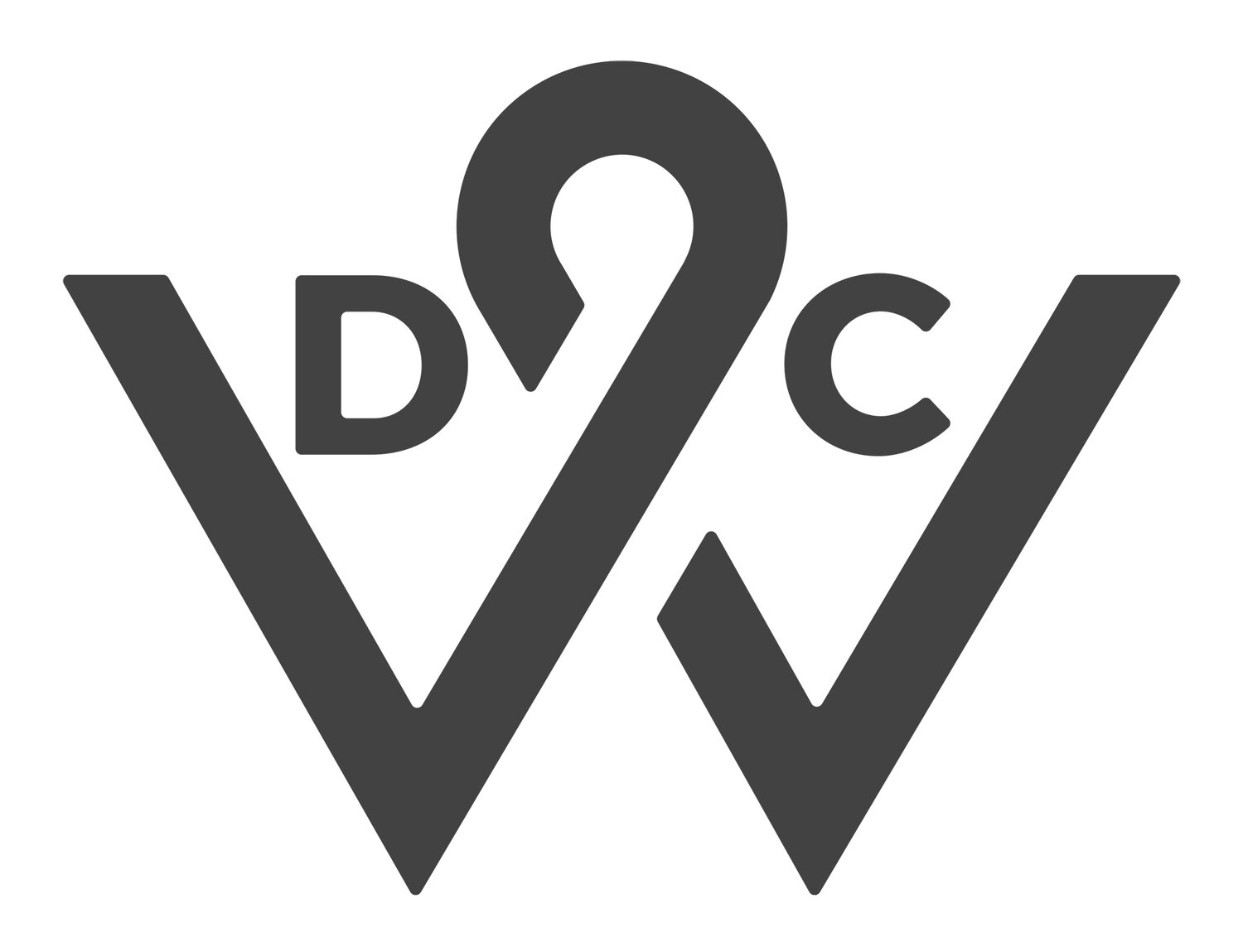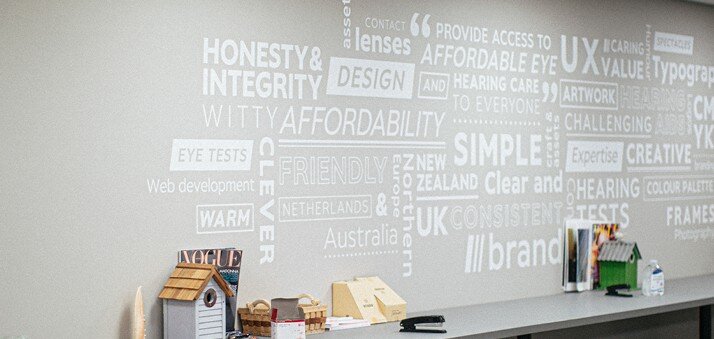More lessons from Specsavers’ IHA
by Patrick Burgoyne
In part 2 of her interview with IHALC host Patrick Burgoyne, Nicola Wardell talks more about her role as MD of The Agency at Specsavers, and reveals more about the way the IHA continues to develop and drive ongoing success.
IHALC: In part one, you mentioned how the nature of the work that the team does is changing, could you talk a little bit about the new skills or the new competencies that you’re adding?
NW: Our starting point was a studio with some conceptual people, so the transition’s quite massive from then to now. We've got brand and CRM strategists that sit along side a sizeable team of data analysts and digital analysts. We’ve got massively broad design expertise, which is important if you think about us as a retailer. As well as our traditional brand and campaign designers that sit alongside our UX and motion designers, we've also got people who design what the in-store environment is like. So again, that's a classic example of how you're responding to what the business needs. It not your classic agency design department, but one that’s fit for purpose for Specsavers.
We also have a web dev team that sit alongside our analysts and UX-ers and are continually optimizing our owned channels – again, bespoke for our business.
And there’s constant evolution within our conceptual team, and we’re continually injecting more digital expertise within that area. It's happening naturally anyway, because of the work that we're required to do and the media landscape, but we've just been more intentional about doing that. And then we have really strong creative production now – that's made a massive difference. And we've got a huge studio function. Again, that is bigger than you'd probably have in a normal agency and is reflective of the fact we're a retailer servicing multi-markets. And then there’s the client partner function I’ve already talked about.
It’s a really bespoke model, and it’s all about what the business needs from us.
Inside Specsavers' in-house agency
One of my most important KPIs is efficiency. And this is a really, really efficient way of working. A lot of external agency conversations centre around conjecture about what the client might be thinking or how no-one’s quite sure what was meant by something that was said. All that just goes out the window because you’re sharing your lunch with these people in the canteen at lunchtime. So, all of that wasted time, it just doesn't exist. Again, clarity and collaboration in abundance.
We've got an end-to-end model that's probably got more breadth and variety to it then than many comparable agencies, certainly at the 90-person size. But we need to keep evolving.
Under Katherine Whitton's guidance (our CMO) we have responded to the need to be more content-first and for us to be more fluid in how we respond to what our customers and what our store partners need from us.
I'm also looking at are how we create different models of working for different parts of the business. So for example, we've got a significant programmatic and e-commerce team that have different needs to the rest of our marketing clients, thus we’re creating a team that has more agility, different skills and a shift in mindset to deliver against those needs.
IHALC: what about your relationship to the marketing department - how is that different to what you have experienced before?
NW: There are more similarities than you’d think. We debate the briefs, we challenge objectives, we stress about cracking the brief, and the feedback if we don’t crack it can be just as brutal. And I think because the clients are also your colleagues there is an even greater sense of accountability. The big shift in dynamic is that there is a psychological safety around it because it’s in everyone’s interests to make our Agency successful, and to make the work, work.
So the conversations feel very similar but the atmosphere within which you are having them is very different
IHALC: Being on Guernsey, you must have some very specific issues around recruitment, how do you attract talent to the agency?
NW: You do find yourself acting a little bit like a tourist information office for the Island☺ Within the talent pool that we're trying to recruit from, the awareness of this island is virtually non-existent. So there's a job to be done in just describing what the island life is like, really. So we start with that conversation.
But the more important conversation to have is about the work, and sometimes there's a concern is about lack of variety. I just encourage candidates to reframe that, because what you are trading in, in terms of breadth, you're gaining in depth. And there is real breadth to our business. We offer ophthalmology and we offer audiology, so you've instantly got two completely different categories and customer bases. We also offer ‘domiciliary’ which is a service for people who can't leave their homes, so there's a there's a beautiful depth of care story attached to that as part of the brand. And of course these three component parts of the business have all got very, very different customers. We’ve also got 10 markets. And within those 10 markets, we've got completely different competitor sets. So although you don’t get a variety of brands, you will get a variety of briefs. It's very far from being the same brief given to us every day.
The other dynamic is of course, the work-life balance, because that's the big question, isn't it? My friends in the agency world are always asking the killer ‘you've gone client side, is it a much easier life?’ question. And I think the answer is no. It’s not easier at all, but it’s a good kind of different.
During the beginning of Covid, like the rest of agency land, we worked every hour of the day, every day of the week. We didn't take bank holidays, we didn't take weekends. But this was constantly being acknowledged as being extraordinary, that this was beyond what anybody would expect you to do in any normal environment. The business acknowledges when you are going above and beyond – it's not expected and it’s very much recognised.
The practical dynamic for those of us who are based on Guernsey (about 20% of the agency is UK-based) is that there is never more than a 12 minute commute to the office. The role feels very similar, but the quality of life is so different. This is a great job with a brilliant brand, so I don't feel at all that I'm downsizing, but I do get to see my child more. And I think we provide a sweet spot for people who have got the drive to do great work on a brand that matters, that is famous, and will develop you, but maybe they just want a tiny bit of balance back.
IHALC: Agencies traditionally have not been great at career development for creatives - training, mentoring and so on. How is that different within a corporate environment?
NW: It’s one of the biggest differences. I think I’ve had more positive people-based conversations in the last nine months here than I’ve had in nine years in adland. And that’s no disrespect to any agencies I’ve worked in, it’s just not such a prominent part of the culture. I wonder whether that’s because we have to work harder to attract the talent and therefore we work harder to retain them? But it’s also about the importance of people to Specsavers. Whether every IHA would say that, I’m not sure, but in our organisation, we are part of the same career development conversations that the rest of the business are having, so there is constant review of performance, of training,(which is like nothing I’ve ever experienced), of progression. We had a whole month in September dedicated to development, not just specific to creative skills but still really valuable content. So that’s a huge difference.
Return to work after motherhood was one of my big passion points when I was at Grey London and we developed a much-needed programme to support our mums. What’s interesting here is that I’ve not had many conversations about that specific topic which probably speaks volumes. No-one’s coming to me saying ‘I cannot manage the two’. Part of that is purely practical because you are so close to everything on the island. It just feels more manageable, both to have children and to carry on working. There’s also a fabulous lack of agism here. I’ve just had a 30-year anniversary in my department. That cross-generational piece is really powerful and isn’t that common in agencies.
IHALC: What about awards: what importance do they have for The Agency?
NW: I’m literally writing the awards strategy as we speak.
The difference in-house is that the lens is all about people rather than new business. I want us to win awards because that will help people here build pride in what they do and it recognises their work, I don’t need them for a new business drive. There will be a real breadth to that - the awards the creatives want to win won’t be the same as the ones that the analytics team want to win. We have to make sure that everyone across the agency has the chance to get recognition.
It’s also a talent pipeline driver for us, so the awards we win have got to mean something to people who are in external agencies who are in our talent pool.
In terms of in house specific awards, I don’t think it’s necessary to have separate criteria when it comes to the work. It’s not about winning ‘best in-house campaign’ at all. We want to be shoulder to shoulder with external teams, winning in our own right.
But I’d love there to be an agency of the year for IHAs though. I think 4Creative does amazing work - they are our bench mark and who we reference in terms of our aspirations. I don’t think it would be hard to fill a league table of really impressive IHAs.
Some of the awards won by The Agency at Specsavers
IHALC: The IPA recently published a report on future agency-brand relationship models, proposing that five different set-ups ranging from pure in-house, to hybrid models to a single external agency handling everything: how do you see things changing?
NW: As an IHA, you’re so mindful of what the business needs, so for us the best agency model is the one that best reflects our business. We are a hybrid model, but in an interesting way because we are not relying on an external partner to set our brand direction – we do that ourselves. I don’t think there are many hybrid model that have no brand creative agency in their constellation.
It’s not just about saving costs - there’s a seamlessness to how we work and if efficiency is one of your drivers, and you want agility and proximity to the business, meaning the ability to influence with really tight turnaround, then an in-house model is worth considering. Would we ever be 100% in-house? We’ve built a really efficient model with the partner agencies we have. As long as we can drive efficiency with them, we will continue to have external partners.
The In-House Agency Leaders Club was created by WDC to support and bring together leaders of in-house agency teams (in-house leaders can join the group here).
In addition to events and research, will be conducting regular interviews with agency leaders where we look at how different members of our community are addressing common challenges and driving the in-house community forward. Look out for news of our first virtual event on January 27.



